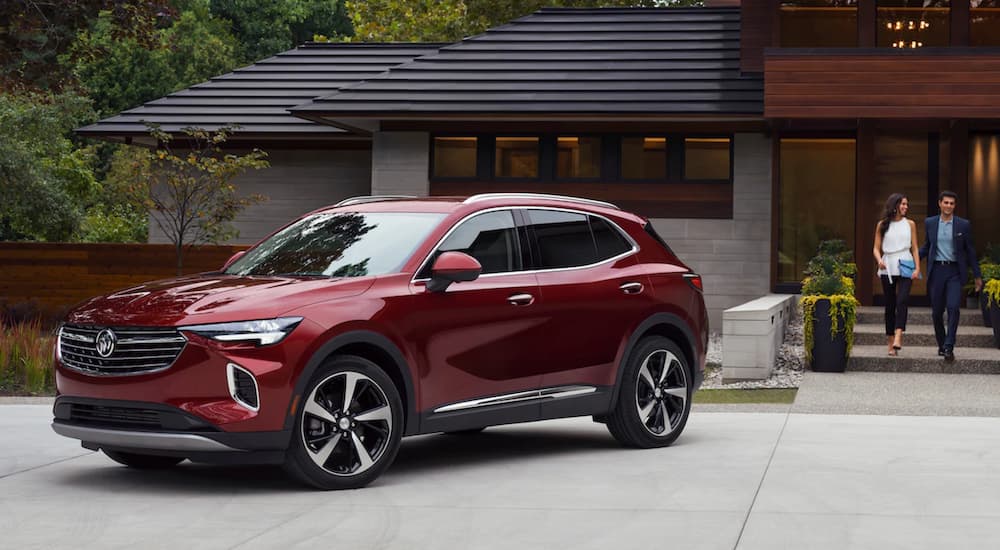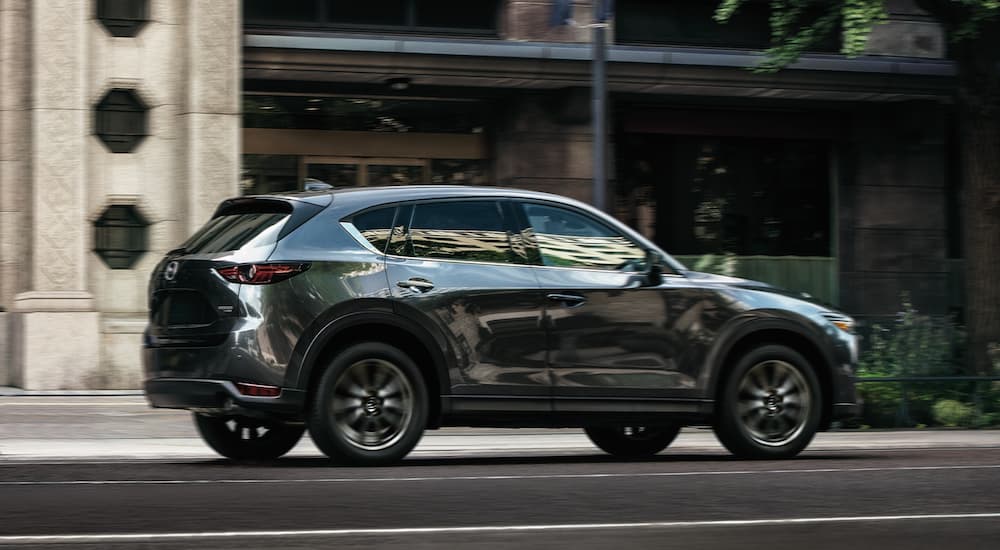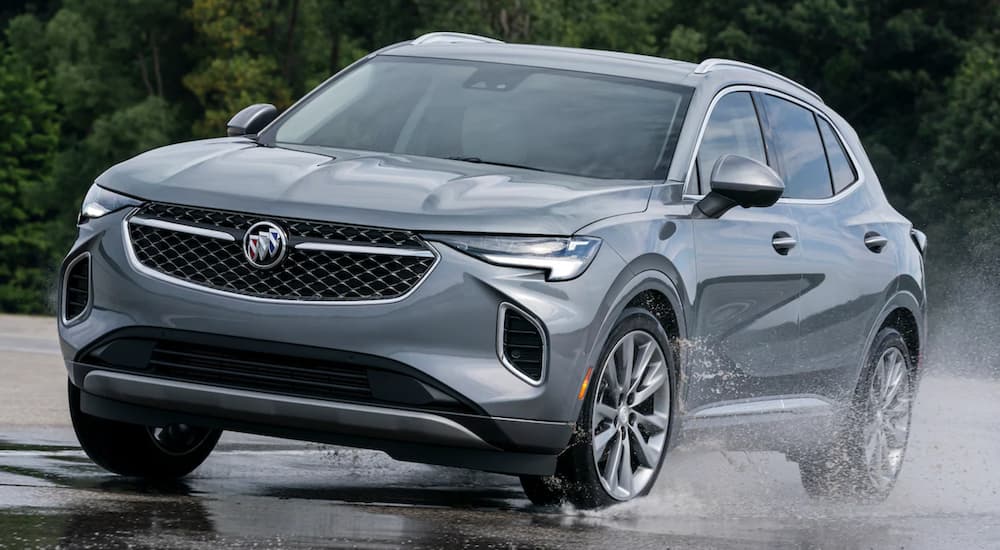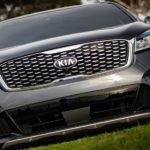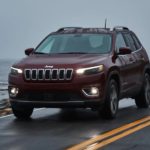When SUVs first made an appearance on dealer showroom floors, they tended to be extensions of vehicles from existing categories: new body styles sitting either on car platforms or pickup platforms. Today, these vehicles are the focus of more extensive engineering, making the pool of options compelling and varied. Take the 2021 Buick Envision vs 2021 Mazda CX-5, two of the most sought-after choices in the cluttered compact crossover SUV segment.
The Envision and CX-5 share a lot of the same features, leaning toward the luxury end of the spectrum, but a few standout features on the former gives it an edge in nearly every category. This is especially true inside the cabin. If sophistication and elegance are the goal – but the budget won’t allow a high-end European import – one of these SUVs might be the answer. The thing is, Mazda’s highly complex lineup confuses the comparison process unnecessarily.
Both of these SUVs earn praise from automotive journalists and third-party reviewers in important areas, like safety and performance. When comparing close contenders, it’s often helpful to look at the bigger picture: which one offers the most complete range of features and characteristics? More specifically, which trims align in price and features? The Envision vs CX-5 is a perfect example of how entry price doesn’t tell the whole story.
We take a closer look at the 2021 Envision and the 2021 CX-5 through the lens of the buyer to determine which SUV should earn a spot in your driveway.
Specs, Stats, and Pricing
The 2021 Buick Envision starts at just over $31,000, offering seating for up to five and a max cargo capacity of 52.7 cubic feet. A generous list of standard driver-assist systems across the trim range will appeal to families, and a simplified 3-trim lineup helps buyers navigate choices easily and logically. Simple is always better during the new car-buying process.
For 2021, Mazda’s CX-5 starts lower, at slightly over $25,000, but with a complex lineup of seven different trims, price creep is substantial as you climb the trim range. The low entry price point feels a little bit like a bait-and-switch tactic, but there’s no denying Mazda set the CX-5’s price bar a bit lower than Buick has with the Envision.
Buick’s three available trims include the Preferred, the Essence, and the top-end Avenir. Right out of the gate, Buick equips the Preferred with a powerful 2.0-liter Turbo EcoTec engine. If you want a turbocharged powertrain on your CX-5, you’ll be traveling up the trim range from the base Sport to the Carbon Edition Turbo (which is similarly priced to the Envision Preferred, hence our comment about Mazda’s dubious trim pricing strategy).
Speaking of the CX-5, here’s the list of available trims: the base Sport, the Touring, the Carbon Edition, the Carbon Edition Turbo, the Grand Touring, the Grand Touring Reserve, and the Signature. The price swing runs from around $25,000 range to nearly $40,000, with some trims differing in price less than $200, which seems unnecessary and excessive.
Luxury vs Luxury
When you’re trying to suss out which is the better of two similar vehicles, it’s often easier to get a picture of overall value if you focus on the highest trim levels. The Envision Avenir is Buick’s ultra-luxury trim; for Mazda, the CX-5 Signature sits at the top of the trim range. Both of these vehicles are infused with plenty of luxury features, but the Envision Avenir manages to hang on to better fuel economy, offering 31 MPG highway to the CX-5 Signature’s 28 MPG highway.
Inside, the Envision Avenir features warm, dark wood-tone accents and diamond-perforated quilting on plush leather seats, including a massage feature on the driver’s side. A 10.2-inch infotainment touchscreen system with standard navigation is set centrally into the dash and angled for easy reach by the driver. On the exterior, 20-inch nickel-plated aluminum wheels and a unique Avenir grille distinguish this trim from its siblings. A unique, category-exclusive rear camera mirror turns the rearview mirror into a rear camera, offering a less obstructed view.
One nagging difference between the CX-5 and, well, just about every other vehicle on the road in and out of its category, is the lack of touchscreen infotainment technology. If you want to interface with the CX-5’s onboard system, you’ll have to rely on a large manual toggle button. It’s confusing why Mazda hasn’t modernized its infotainment management system, and we believe it’s a quirk that will detract from the vehicle’s other benefits and create frustration down the line.
Otherwise, The CX-5 Signature offers features similar to those found on the Envision Avenir, minus some of the more unique high-end features, like massage seats and the innovative rear camera mirror. Both vehicles offer an upgraded Bose entertainment system, a power moonroof, and a power liftgate (the Envision’s is programmable), and LED headlights, taillights, and fog lights. One notable difference: the Envisions 20-inch wheels give it a sportier, more aggressive curb appeal than the CX-5, which features smaller 19-inch wheels.
Safety and Security
Both the 2021 Buick Envision and the 2021 Mazda CX-5 earn high marks for safety, in part due to the long list of standard driver-assist features found across the trim ranges of both. The Envision features eight:
- Automatic Emergency Braking
- Following Distance Indicator
- Forward Collision Alert
- Front Pedestrian Braking
- Lane Change Alert with Side Blind Zone Alert
- Lane Keep Assist with Lane Departure Warning
- Rear Cross Traffic Alert
- Rear Park Assist
The CX-5’s standard driver-assist suite includes just five systems. As you move up the trim range, more standard features are added, but at the base Sport level, you only get five:
- Blind Spot Monitoring with Rear Cross Traffic Alert
- Radar Cruise Control with Stop & Go
- Advanced Smart City Brake Support with Pedestrian Detection
- Smart Brake Support with Collision Warning
- Lane Departure Warning System with Lane-Keep Assist
In addition to driver-assist safety features, the CX-5 offers dual front airbags, side-impact airbags, and side-impact air curtains with rollover protection, along with stability control and traction control. A hill launch assist minimizes rollback when starting from a full stop on an incline, and a standard tire pressure monitoring system helps drivers keep tires properly inflated.
The Envision includes front airbags, a knee airbag on the driver’s side, and side-impact air curtains that are roof-rail mounted. The CX-5 doesn’t include a knee airbag. All Envision trims receive an HD rearview camera (the CX-5’s isn’t HD), stability control, and traction control. A more intelligent tire pressure monitoring system is also standard on the Envision. It can tell drivers which specific tire needs attention.
More Options Isn’t Always a Good Thing
Our bottom line is this: both vehicles offer a comprehensive range of features in key areas, like performance, infotainment, and safety. They’re also both luxurious (depending on the trim) and offer competitive warranties. The big differences here are pricing transparency and trim lineups. The purchase experience is infinitely less complex when straightforward trim levels are in the mix. Otherwise, it takes way too much time to dig into specifications and make a true comparison.
The other obvious difference that we just can’t shake is the lack of touchscreen infotainment in the Mazda CX-5. We simply can’t understand why, in 2021, when even far less expensive vehicles feature standard touchscreen technology (and have for years), the engineers at Mazda haven’t upgraded its infotainment. It’s a deal-breaker for us, earning the 2021 Buick Envision an easy win.
